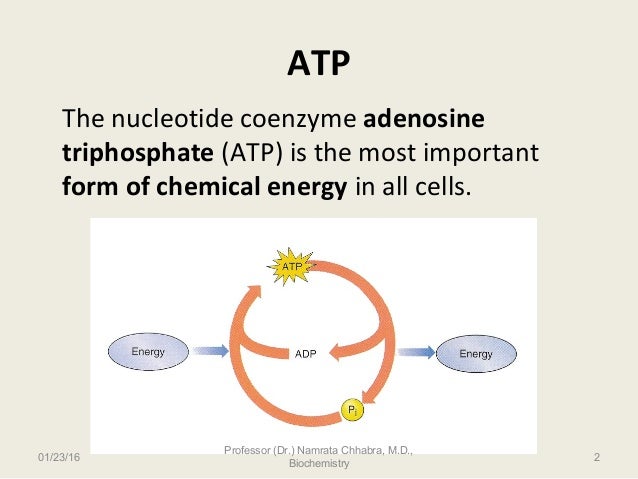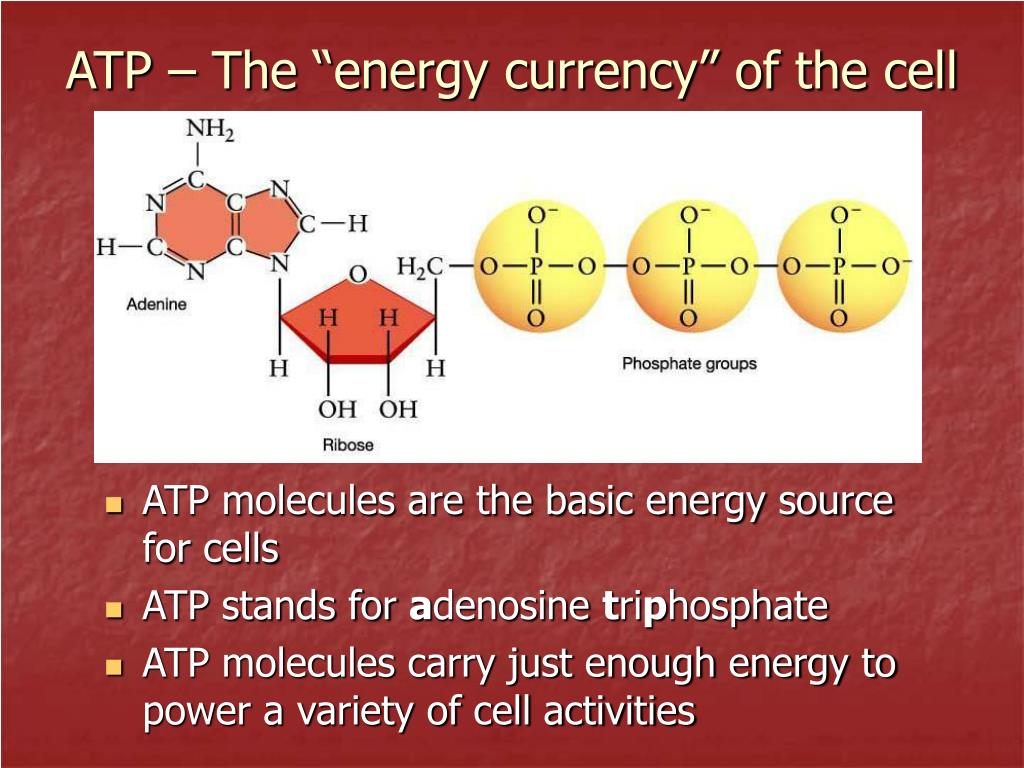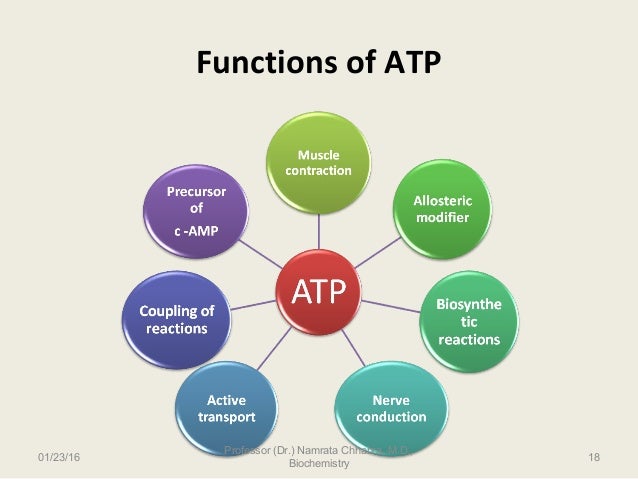Why Is Atp Considered The Energy Currency Of The Cell

Imagine a bustling city, its lights ablaze, its factories humming, its vehicles zipping through the streets. Every action, from powering a streetlamp to fueling a delivery truck, requires a readily available source of energy. Now, zoom in to the microscopic world within your own cells – a world just as dynamic and energy-demanding. Like that city, each cell needs a reliable power source to perform its essential functions. And just as a city relies on a common currency to facilitate transactions, your cells rely on a single, vital molecule: ATP, or adenosine triphosphate.
This brings us to the core of our discussion: why is ATP universally recognized as the energy currency of the cell? It's not merely a source of energy; it's the specific, readily accessible form of energy that cells are designed to use for virtually all their activities. From muscle contraction to protein synthesis, from nerve impulse transmission to the active transport of molecules across membranes, ATP is the fuel that powers life at its most fundamental level.
The Structure of ATP: A Key to Understanding Its Role
To understand ATP's unique role, we must first examine its structure. Adenosine triphosphate consists of an adenosine molecule (comprising adenine, a nitrogenous base, and ribose, a five-carbon sugar) bound to three phosphate groups. These phosphate groups are linked by high-energy bonds.
It’s the breaking of these bonds, specifically the bond between the second and third phosphate groups, that releases the energy cells use to do work. Think of it like snapping a rubber band – the tension built within is released as kinetic energy.
ATP Hydrolysis: The Energy Release Mechanism
The process of breaking that bond is called hydrolysis, where a water molecule is used to cleave off the terminal phosphate group. This reaction converts ATP into adenosine diphosphate (ADP) and inorganic phosphate (Pi), releasing energy in the process.
This energy release is not just any amount of energy; it's a precise and manageable amount, perfectly suited for driving various cellular processes. The cell has evolved to harness this energy with remarkable efficiency.
Coupled Reactions: ATP as the Intermediary
One of ATP's most important characteristics is its ability to be coupled with energetically unfavorable reactions. Many biological reactions require energy input to proceed, meaning they won't happen spontaneously.
ATP steps in as the intermediary, providing the necessary energy to "push" these reactions forward. The energy released from ATP hydrolysis is directly used to drive the endergonic (energy-requiring) reaction, making the overall process thermodynamically favorable.
For example, the synthesis of proteins from amino acids requires energy. This process is coupled to ATP hydrolysis, ensuring that the reaction proceeds efficiently. Without ATP, protein synthesis would grind to a halt.
Why Not Other Molecules? The Specificity of ATP
The question naturally arises: why ATP and not some other molecule? While other molecules can store energy, ATP possesses a unique combination of properties that make it ideal for its role as the cellular energy currency.
First, the energy released from ATP hydrolysis is readily accessible. The cell has evolved a vast array of enzymes that specifically bind to ATP and utilize its energy to catalyze various reactions. This enzymatic specificity is crucial for efficient energy transfer.
Second, ATP is a relatively small and water-soluble molecule, allowing it to diffuse rapidly throughout the cell and reach the sites where energy is needed. Its size and solubility facilitate its quick distribution.
Third, the amount of energy released by ATP hydrolysis is just right for most cellular reactions. It's not too much, which could lead to wasted energy, and not too little, which would be insufficient to drive the reaction. It's the "Goldilocks" amount of energy.
The Constant Cycle: ATP Regeneration
If ATP is constantly being used, how does the cell maintain a sufficient supply? The answer lies in a continuous cycle of ATP regeneration. ADP, the product of ATP hydrolysis, is not simply discarded. Instead, it is re-phosphorylated back into ATP.
This regeneration process is primarily fueled by cellular respiration, a complex series of metabolic reactions that break down glucose and other organic molecules to release energy. This energy is then used to add a phosphate group back onto ADP, recreating ATP.
Think of it as a rechargeable battery. ATP is discharged as it provides energy, becoming ADP. Cellular respiration then recharges the battery, converting ADP back into ATP. This cycle ensures a constant supply of energy for the cell's needs.
ATP's Universality: Evidence of Common Ancestry
The use of ATP as the primary energy currency is not limited to a few specific organisms. It's a universal feature of all known life forms, from bacteria to humans. This widespread use of ATP provides strong evidence for the common ancestry of all living things.
The fact that all organisms rely on the same basic molecule for energy suggests that ATP arose early in the history of life and has been conserved throughout evolution. It's a testament to the efficiency and effectiveness of ATP as an energy carrier.
The Future of ATP Research
Research into ATP and its role in cellular processes continues to be a vibrant and active area of scientific inquiry. Scientists are exploring new ways to manipulate ATP levels and activity to treat various diseases, including cancer and metabolic disorders.
Understanding the intricacies of ATP metabolism can also lead to the development of novel energy technologies, inspired by the efficiency of biological systems. The potential applications are vast and exciting.
Conclusion: ATP - The Unsung Hero of Life
From the smallest bacterium to the largest whale, every living organism depends on ATP. It’s the invisible force that powers our muscles, fuels our brains, and keeps our cells alive. While often overlooked, ATP is truly the unsung hero of life.
So, the next time you feel a surge of energy, remember the tiny ATP molecules diligently working within your cells, keeping you going. They are the embodiment of life's energy currency, a testament to the elegant and efficient design of nature.


















